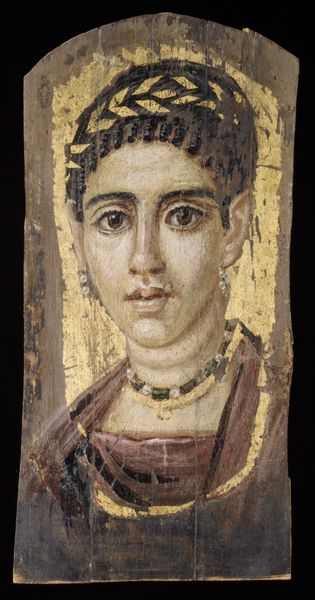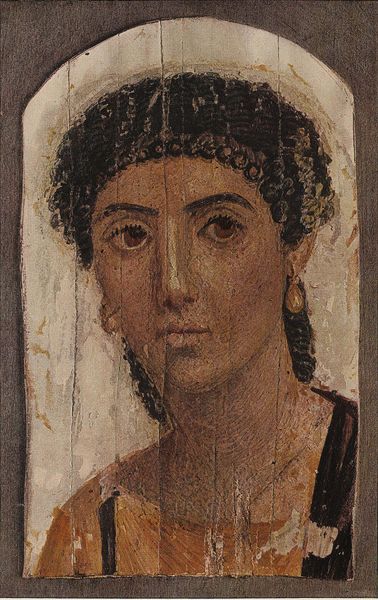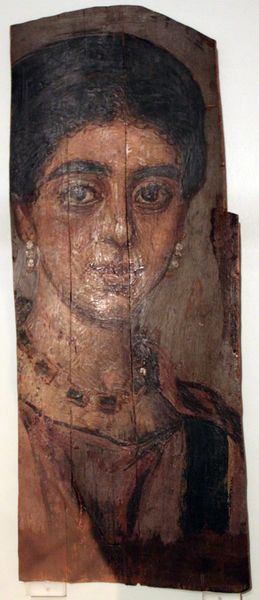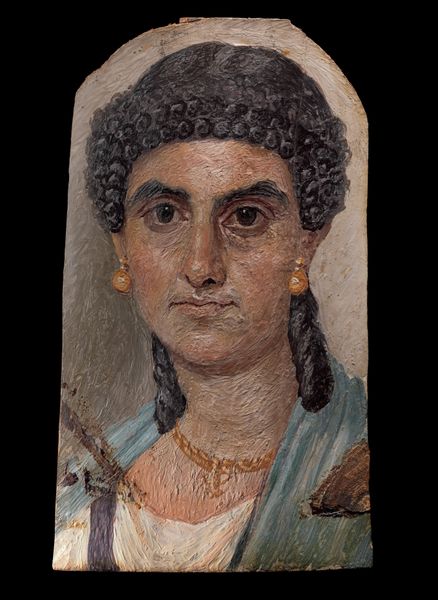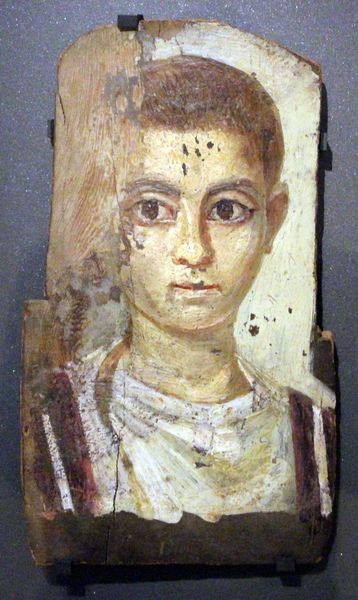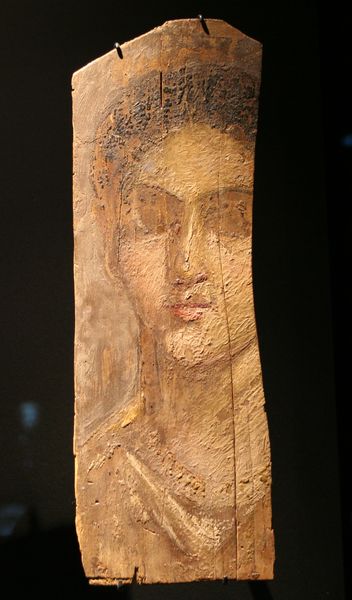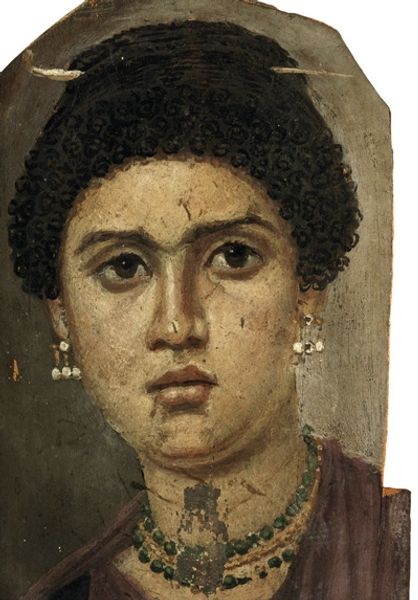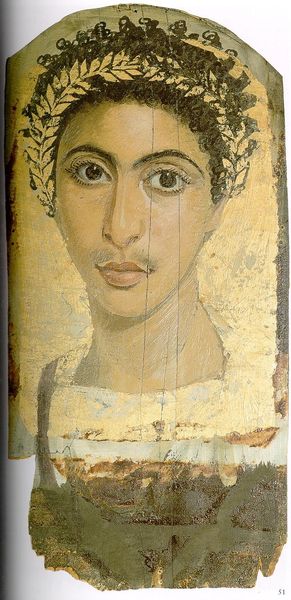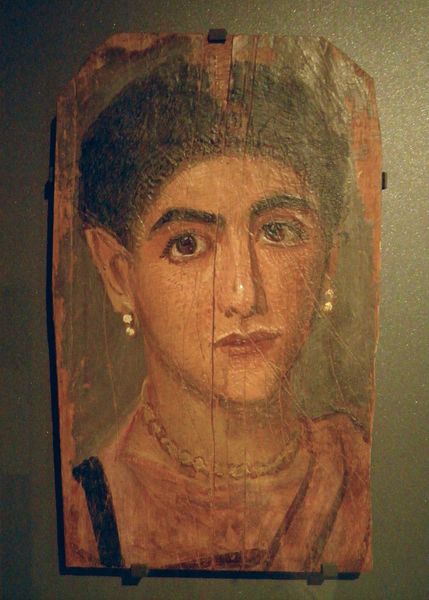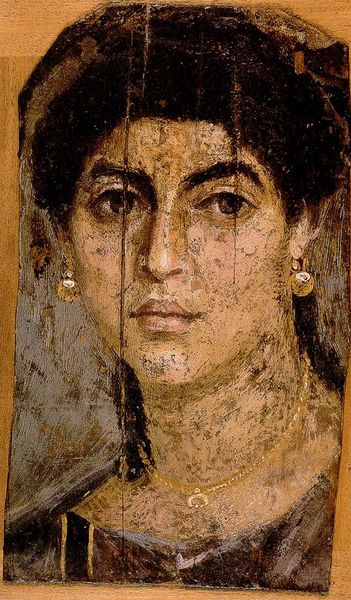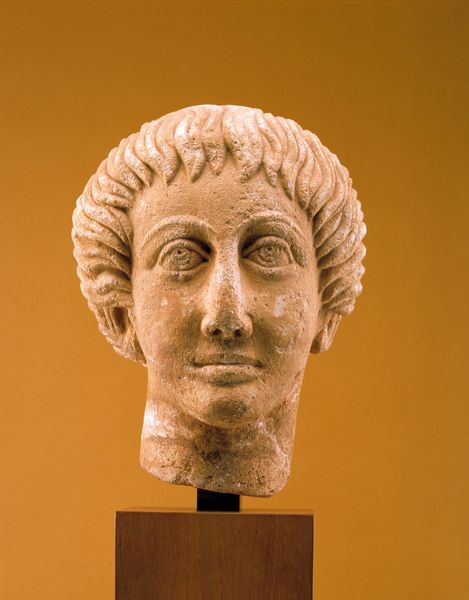
tempera, painting
#
portrait
#
tempera
#
painting
#
greek-and-roman-art
#
ancient-egyptian-art
#
oil painting
#
ancient-mediterranean
#
realism
Copyright: Public domain
Editor: Here we have the Mummy Portrait of Eirene, created around 50 AD using tempera. It's striking how directly she gazes out at us. I’m also fascinated by the way the artist used light to create depth and form, and what stands out for me is the wood panel showing at the bottom edge of the image. What are your thoughts on this piece? Curator: What arrests me is the geometric underpinning. Note the almost perfect symmetry bisecting the composition: the eyes as key focal points mirrored almost identically; the subtle triangulation of the nose and mouth reinforcing the stability of the gaze. How does the colour palette inform your interpretation? Editor: The warm tones certainly lend it a lifelike quality. Perhaps even suggest a life of privilege? The jewelry stands out against the more muted background too. It’s interesting to me the different values in the painting. Are these used for something specific? Curator: Consider the surface treatment, the layering of pigments. The artist employs subtle tonal gradations to model the contours of Eirene’s face. It seems that by contrasting warm flesh tones with cooler shadows, a palpable sense of volume is rendered. What, if anything, does the somewhat tattered edge where the wood panel shows through communicate to you? Editor: It gives me a better understanding of what a "mummy portrait" really is and helps reveal its history, even after thousands of years. Curator: Quite astute. It serves to remind us of the artwork’s objecthood and the context in which it would originally have been set and viewed. Editor: Looking at the portrait with that in mind, I now notice the subtle balance of realism and idealization – the way it captures an individual likeness while conforming to broader aesthetic conventions of the time. Thanks for highlighting those design principles! Curator: An enriching dialogue. It serves as a stark reminder that our appreciation for ancient works should extend to appreciating their materials.
Comments
No comments
Be the first to comment and join the conversation on the ultimate creative platform.
